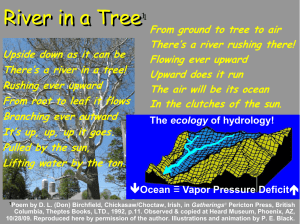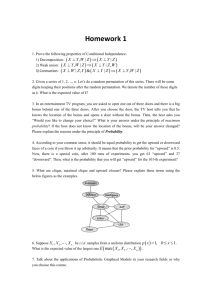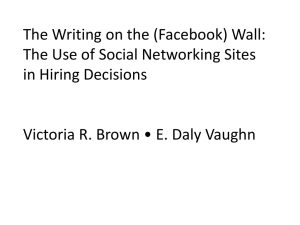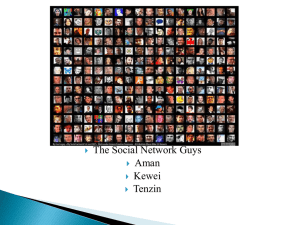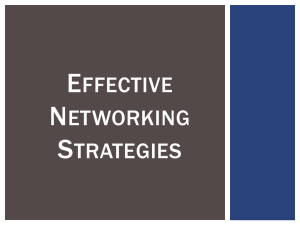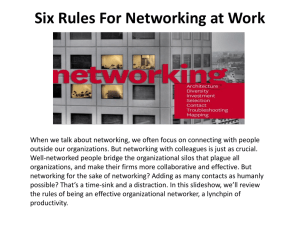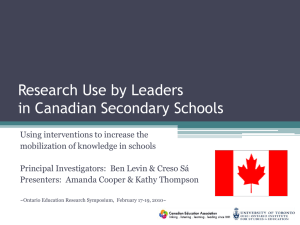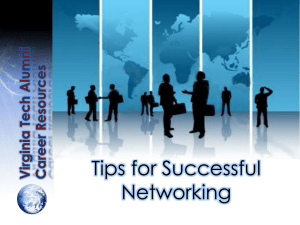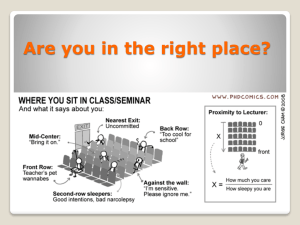PowerPoint - Academic Leadership
advertisement
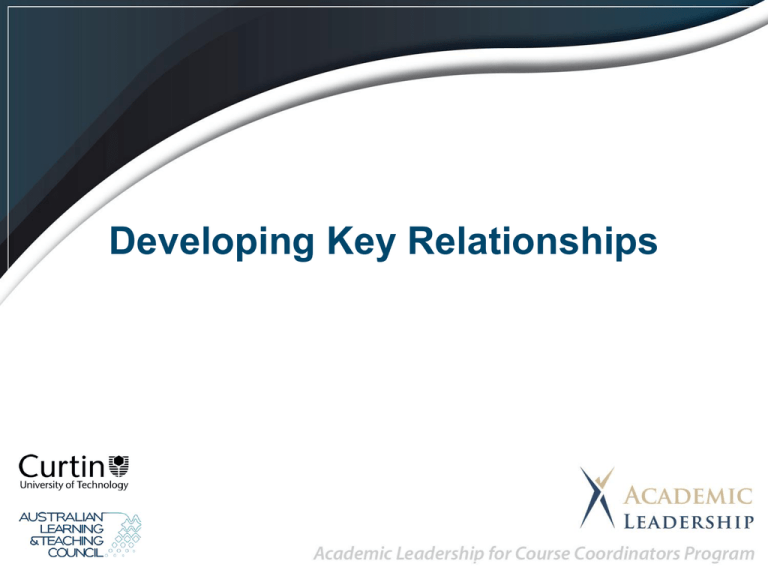
Developing Key Relationships Managing Upwards & Building Influence • Learning Outcomes – Map the dynamics of their own role and relationship with their Head of School/Area. – Develop Strategies to build influence in key peer relationships. • Integrated Competing Values Framework – Broker Power and Politics (Gabarro and Kotter) Scarce Resources Wit Politics Person A Favorable Social Activity Person B Power Will Political Skill Influencing: Sources of Power and Tactics Personal Power Position Power (French & Raven, 1959) Types Tactics Legitimate Legitimization Consultation Rational persuasion Reward Exchange Coercive Pressure Connection Coalitions Information Rational persuasion Expert Rational persuasion Referent Inspirational appeal Personal appeal Increasing your Upward Influence • Sources of Position Power – Centrality – Criticality – Visibility – Relevance Increasing your Upward Influence • Expertise – – – – Important in technological driven societies Knowledge is power Specialisation can be a dead end Impression management • Emotional Intelligence Increasing your Upward Influence • Personal Attraction – Agreeable behavior – Attractive physical appearance – Likeability • • • • • Arguments accepted Trustworthy Good performance appraisals Influence EQ Increasing your Upward Influence • Legitimacy – Your vision – Is it congruent with the value system of the organisation – Generate stories, rituals, symbols which emphasise your vision and build culture Increasing your Upward Influence • Effort – – – – What will benefit the boss? What will increase your knowledge? Effort equates to dedication and commitment. Contribute to the group. Managing Upward (Broker Role) • Understand your boss • Understand yourself • Take Action – – – – – Develop a compatible relationship Develop a set of mutual expectations Manage the flow of information Be dependable and straightforward Use the boss’s time and resources wisely Managing Upwards CEO Manager Counterdependence Overdependence Kotter (1985) Power and Influence: Beyond Formal Authority. NY. Free Press Applying Type Dynamics: In Influencing • Consider your own MBTI Type • Map it against an individual in the workplace: – – – – that you enjoy working with…… that you dislike working with….. consider what their types may be…. does it provide any information that is useful to you that you might use in your CC role – consider your course team, who are the significant players, the quiet ones, non-participative, what is the balance of type – again, does this analysis provide any information that is useful to you in your CC role Networking (Henderson R. 2005 Management Today, October, 34-36, 38-39. • What is networking? • What are your personal views of networking? • How does networking influence you and your work related outcomes? • How had networking influenced your career progression? Networking (Henderson R. 2005 Management Today, October, 34-36, 38-39.) • “If you are not a master networker, it is highly unlikely that you will be an effective leader or have any substantial influence in your networks, communities or workplace.” p. 34 Networking (Henderson R. 2005 Management Today, October, 34-36, 38-39.) • Is a skill, not something you do – skills can be learned – Law of Abundance – Law of Reciprocity – Law of Giving without Expectation • • • • Network ethically, professionally and courteously High level communication skills Network creation takes time, effort and sincerity Research the kind of networks you want, goals you want to achieve, attend events, be transparent • Share information, talk to the whole person, give out recognition
